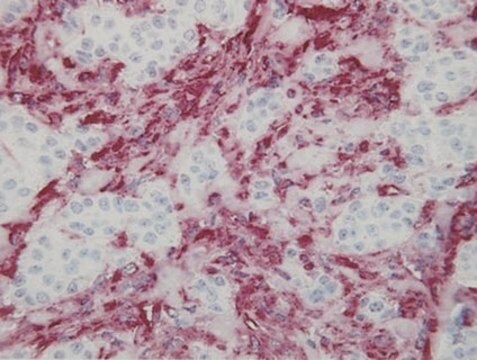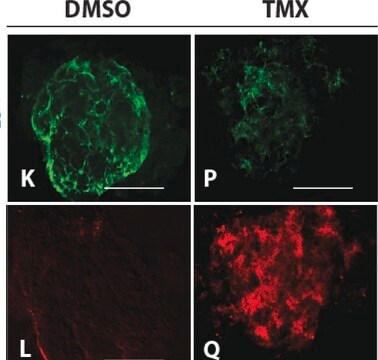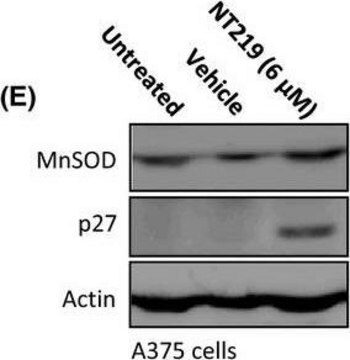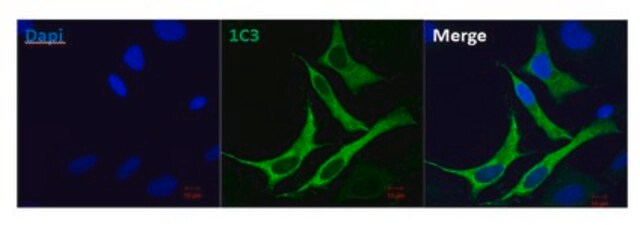CBL202
Anticuerpo anti-vimentina, clon VIM 3B4
clone VIM 3B4, Chemicon®, from mouse
About This Item
Productos recomendados
biological source
mouse
Quality Level
antibody form
purified immunoglobulin
antibody product type
primary antibodies
clone
VIM 3B4, monoclonal
species reactivity
chicken, amphibian, bovine, monkey, canine, human
manufacturer/tradename
Chemicon®
technique(s)
ELISA: suitable
immunofluorescence: suitable
immunohistochemistry: suitable (paraffin)
western blot: suitable
isotype
IgG2a
NCBI accession no.
UniProt accession no.
shipped in
wet ice
Gene Information
human ... VIM(7431)
Specificity
Immunogen
Application
Inmunohistoquímica: 1:100; Cortes de tejido incluidos en parafina y congelados con un mínimo de una hora de incubación (más tiempo para la parafina); para los cortes incluidos en parafina se recomienda pretratamiento con proteasas.
Inmunofluorescencia
ELISA
El usuario final debe determinar las diluciones de trabajo óptimas.
Estructura celular
Citoesqueleto
Target description
Physical form
Storage and Stability
Analysis Note
Positivo en células RD, células de glioma, fibroblastos (SV-80) y línea celular MDCK
Other Notes
Legal Information
Disclaimer
¿No encuentra el producto adecuado?
Pruebe nuestro Herramienta de selección de productos.
Optional
signalword
Warning
hcodes
Hazard Classifications
Acute Tox. 4 Dermal - Acute Tox. 4 Inhalation - Aquatic Chronic 3
Storage Class
11 - Combustible Solids
wgk_germany
WGK 3
Certificados de análisis (COA)
Busque Certificados de análisis (COA) introduciendo el número de lote del producto. Los números de lote se encuentran en la etiqueta del producto después de las palabras «Lot» o «Batch»
¿Ya tiene este producto?
Encuentre la documentación para los productos que ha comprado recientemente en la Biblioteca de documentos.
Nuestro equipo de científicos tiene experiencia en todas las áreas de investigación: Ciencias de la vida, Ciencia de los materiales, Síntesis química, Cromatografía, Analítica y muchas otras.
Póngase en contacto con el Servicio técnico









